Journal list menu
Export Citations
Download PDFs
ISSUE INFORMATION
Issue Information
- Pages: 127-128
- First Published: 12 October 2023
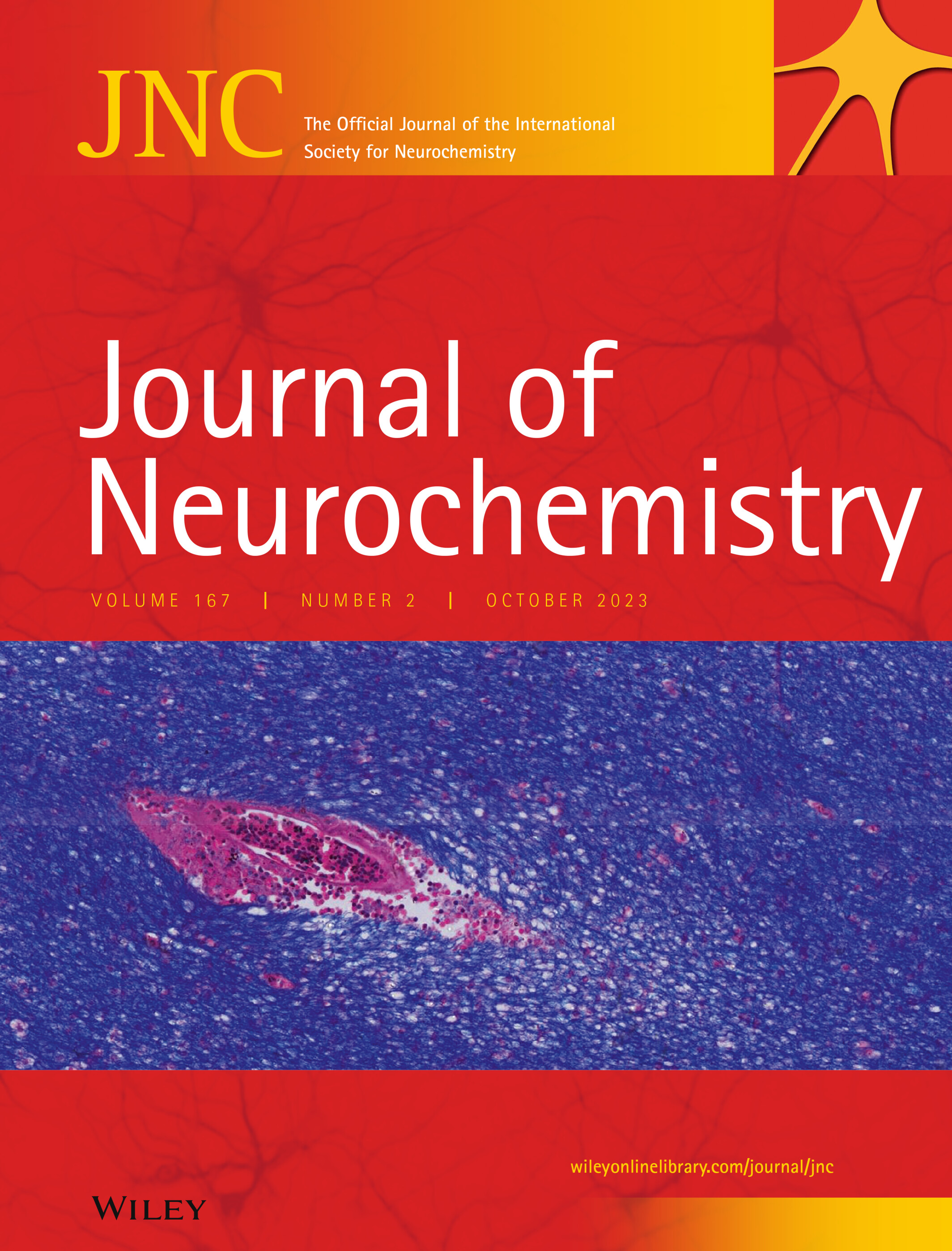
Front cover
Traumatic brain injury (TBI) is one of the leading causes of disability and mortality and causes significant neurological and degenerative changes. Primary injury in TBI consists of distinct neuroanatomical zones termed as contusion (Ct) and pericontusion (PC). Since their dynamic expansion could lead to neurological deterioration, their cellular-level and molecular analysis will provide valuable information. Proteomic and phosphoproteomic analysis in human TBI brains carried out in this study distinguished Ct, PC and away from contusion (AC). Mitochondrial dysfunction in AC could contribute to secondary injury events. Non-synaptic mitochondria displayed relatively more differentially expressed proteins compared to synaptosomes, while the latter revealed increased protein oxidation including tryptophan oxidation.
Image content
The image provided here highlights the blood brain barrier (BBB) alterations in the PC zone. A tissue section from the PC zone of human TBI brain stained with Luxol fast blue for myelin shows vasogenic edema with perivascular fluid accumulation from disrupted BBB.
Read the full article ‘Neuroanatomical zones of human traumatic brain injury reveal significant differences in protein profile and protein oxidation: Implications for secondary injury events’ by N. Gowthami, N. Pursotham, G. Dey, V. Ghose, G. Sathe, N. Pruthi, D. Shukla, N. Gayathri, R. Santhoshkumar, B. Padmanabhan, V. Chandramohan, A. Mahadevan and M. M. Srinivas Bharath (J. Neurochem. vol. 167 (2), pp. 218–247) on doi: 10.1111/jnc.15953
REVIEW
Fundamental Neurochemistry Review: Microglial immunometabolism in traumatic brain injury
- Pages: 129-153
- First Published: 27 September 2023
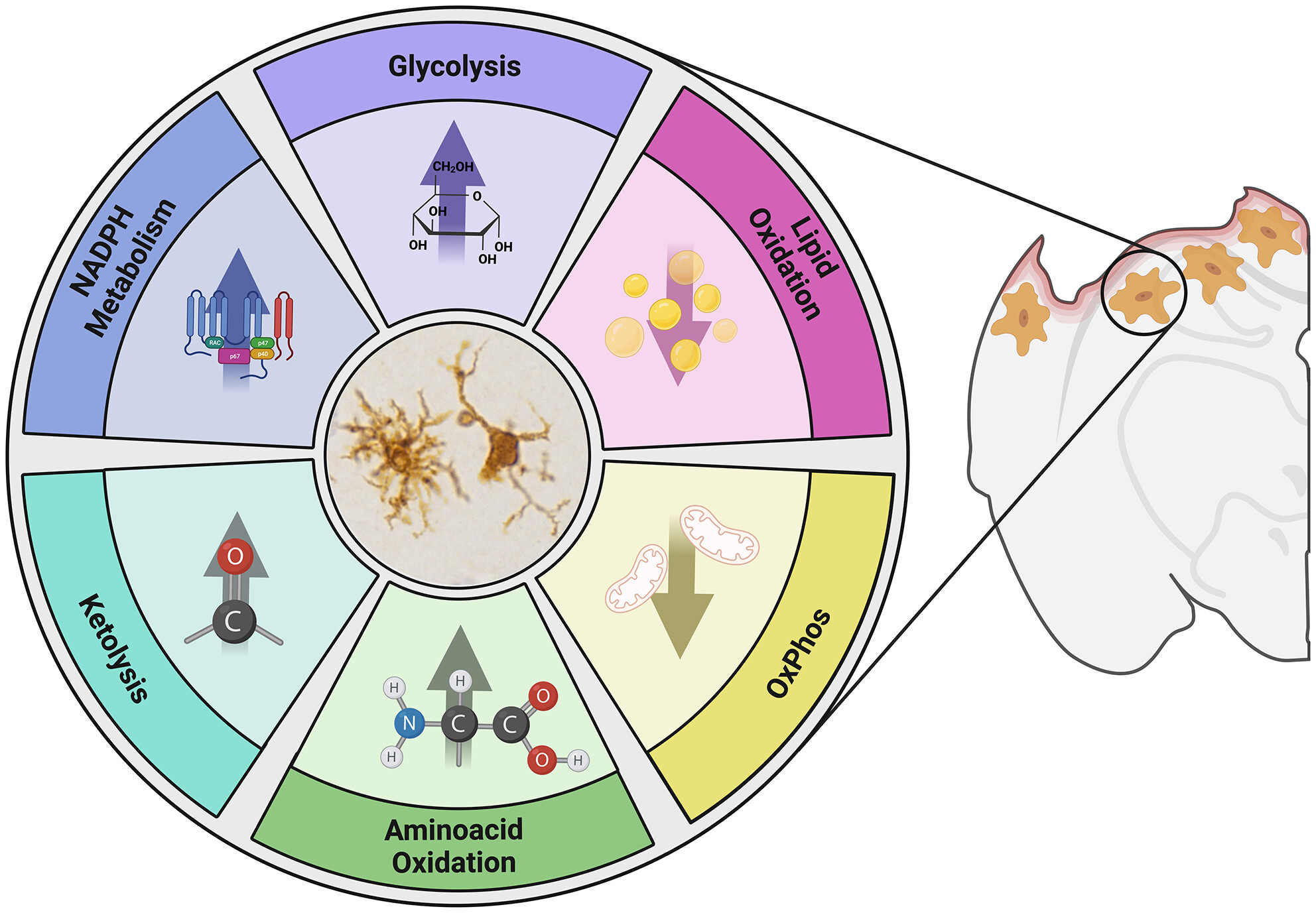
In this fundamental neurochemistry review, we examine the relationship between traumatic brain injury (TBI) and immune cell metabolism, primarily focusing on microglia. TBI leads to widespread damage and chronic neurodegeneration, with secondary brain injury involving mitochondrial dysfunction and ongoing neuroinflammation. Microglia contribute to inflammation via cytokine and reactive oxygen species production chronically post-TBI, and promote long-term neurodegeneration. Metabolic pathways in these cells regulate immune responses, with metabolic adaptations driving pro- or anti-inflammatory states. However, questions about microglial mitochondrial dysfunction, the roles of specific metabolic pathways, and how immunometabolism influences chronic neuroinflammation following TBI remain. The review explores these aspects to advance understanding of immunometabolic changes in TBI.
ORIGINAL ARTICLES
Physiologically relevant fluorescent assay for identification of 17β-hydroxysteroid dehydrogenase type 10 inhibitors
- Pages: 154-167
- First Published: 17 July 2023
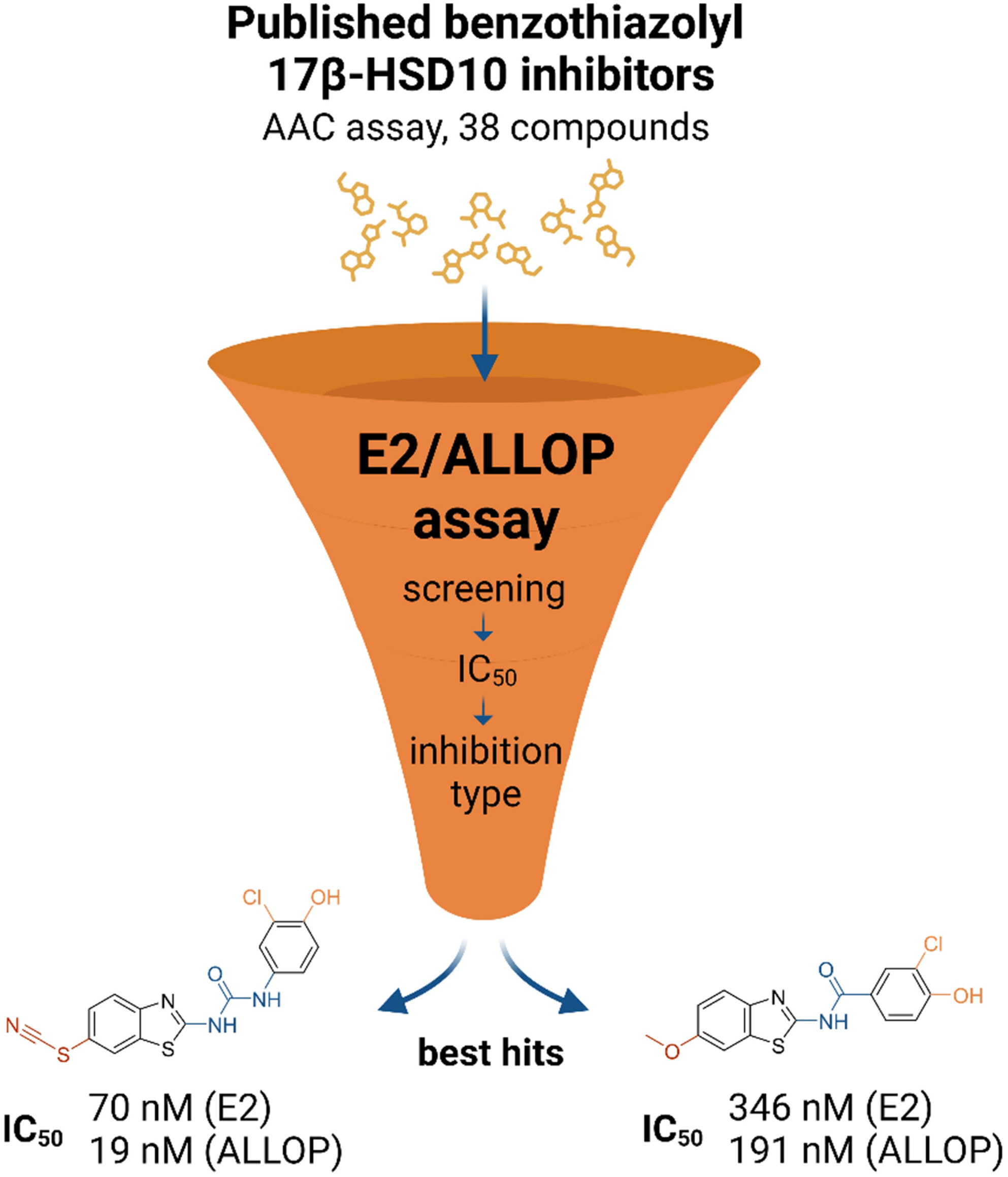
We have used 38 previously published benzothiazolyl compounds reported to inhibit mitochondrial 17β-hydroxysteroid dehydrogenase type 10 that is involved in the pathology of neurodegenerative diseases, for example, Alzheimer's disease. We have used more physiologically relevant steroid substrates 17β-oestradiol and allopregnanolone and re-screened the compound library using the new assay. The best hits revealed from these assays confirmed several structural motifs necessary to inhibit the 17β-hydroxysteroid dehydrogenase type 10, and the novel hits could serve as lead compounds for further research.
Cerebrospinal fluid and blood serum biomarkers in neurodegenerative proteinopathies: A prospective, open, cross-correlation study
- Pages: 168-182
- First Published: 07 September 2023

Examination of blood serum (BS) and cerebrospinal fluid (CSF) biomarkers (α-synuclein, tau protein, phosphorylated tau protein, amyloid beta, clusterin, chromogranin A, cystatin C, neurofilament heavy chains, phosphorylated form of neurofilament heavy chains, ratio of tau protein/amyloid beta) has shown that when assessed in CSF, they may be potentially useful for differential diagnosis of multiple system atrophy (MSA) versus four-repeat tauopathies (4RT) and of Lewy body diseases (LBD) versus MSA but not between LBD and 4RT.These biomarkers do not seem to possess a diagnostic value when assessed in BS. Important future research step will be finding BS biomarkers that can predict the manifestation of proteinopathy itself or that will help to more clearly differentiate neurodegenerative diseases in their initial stages.
Progression of reactive gliosis and astroglial phenotypic changes following stab wound-induced traumatic brain injury in mice
- Pages: 183-203
- First Published: 17 August 2023

Stab wound results in a focal traumatic brain injury. Following the injury, reactive GFAP+ astrocytes can be clustered in five different reactive phenotypes (I–V) while type 0 astrocytes remain non-reactive. Type V astrocytes exhibit increased cell size, more complex morphology, and reduced expression of homeostatic genes such as glutamine synthetase and aquaporin-4. Conversely, they over-express of the pro-inflammatory molecule C3. Injection of LPS increases the abundance of type V astrocytes and NF-κB inhibitor sulfasalazine decreases it. We propose that type V astrocytes represent astrocytes that have undergone pathological remodeling with pro-inflammatory gain of function and diminished homeostatic capacity to support neurons.
Novel RXFP3 negative allosteric modulator RLX-33 reduces alcohol self-administration in rats
- Pages: 204-217
- First Published: 06 September 2023
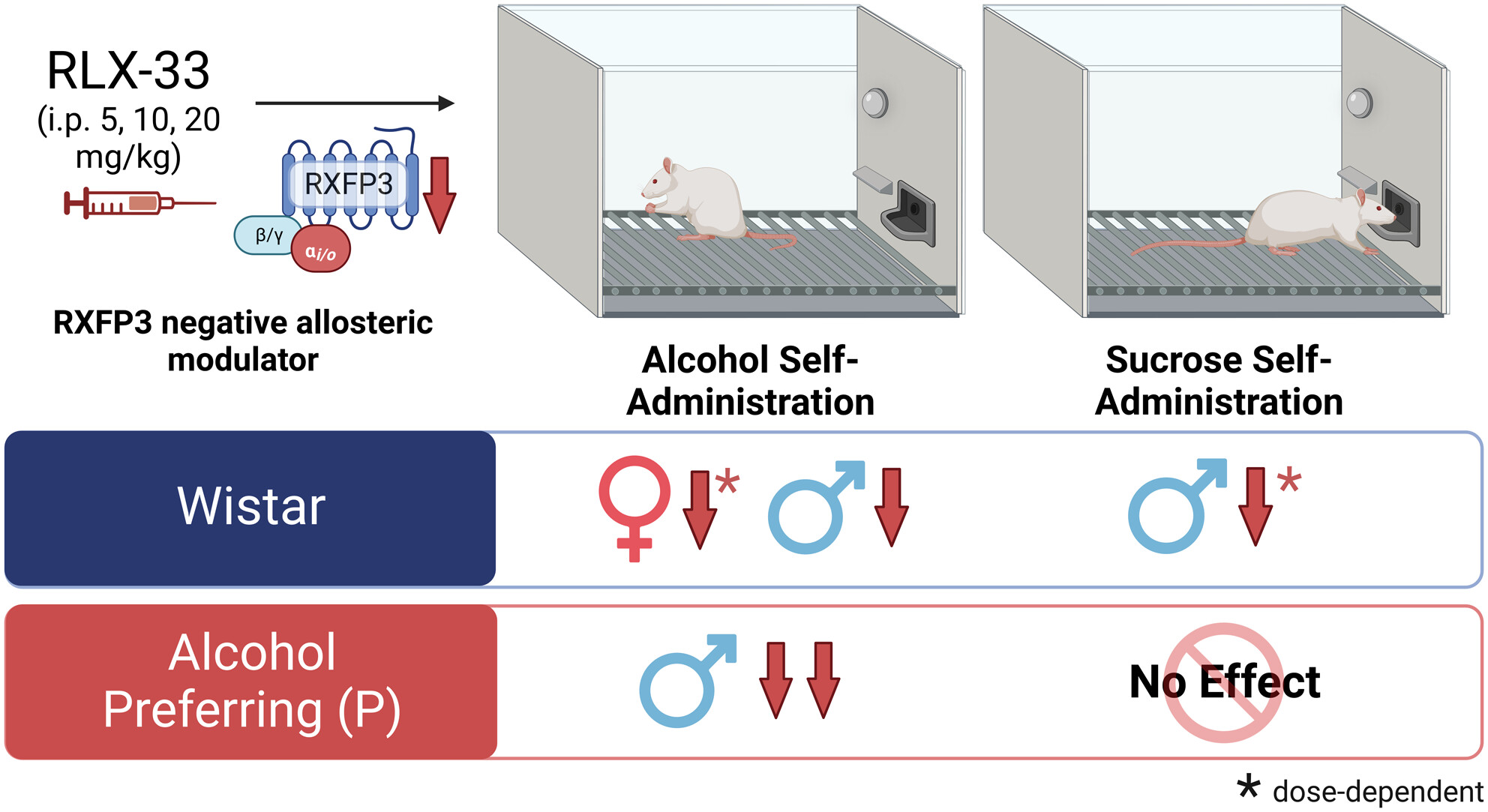
The present work characterized the impact of a small-molecule negative allosteric modulator of the relaxin family peptide 3 (RXFP3) receptor, a cognate receptor for neuropeptide relaxin-3, on alcohol self-administration and affective-related behaviors in rats. We found that the lowest effective dose reduced alcohol self-administration in both male and female Wistar rats while having little to no effect on sucrose self-administration, locomotor activity, affective behaviors, or alcohol clearance. In alcohol-preferring P rats, the reduction of alcohol self-administration was restricted to males. Overall, these findings provide evidence for RXFP3 as a promising pharmacological target for treating alcohol use disorder (Graphic: BioRender.com).
Neuroanatomical zones of human traumatic brain injury reveal significant differences in protein profile and protein oxidation: Implications for secondary injury events
- Pages: 218-247
- First Published: 11 September 2023
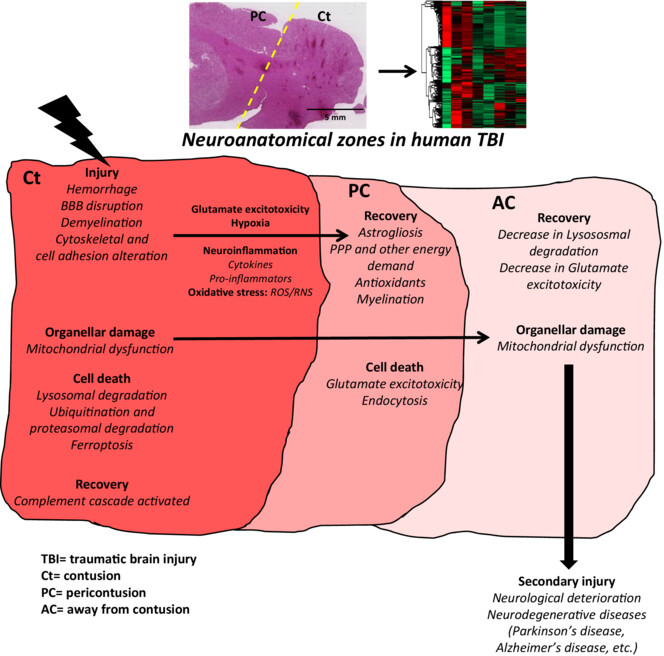
Primary injury in human traumatic brain injury (TBI) consists of three distinct neuroanatomical zones- contusion (Ct), pericontusion (PC) and away from contusion (AC). Among these, dynamic expansion of Ct and PC could lead to neurological deterioration of the patient. Secondary events triggered from these zones including AC could elicit neurodegeneration and cognitive impairment in the long term. Proteomic and phosphoproteomic analysis human TBI carried out in this study revealed distinct molecular pathways differentiating the three zones as shown in the image. Most of these changes were noted in the non-synaptic mitochondria. Synaptic terminals from the zones displayed protein oxidation with Trp oxidation targeting respiratory chain complexes mainly, the mitochondrial complex I, as one of the prominent mechanisms. Image content: The schematic shows the predominant cellular processes in Ct, PC and AC and the ensuing secondary events and neurodegeneration.
Amyloid-β exposed astrocytes induce iron transport from endothelial cells at the blood–brain barrier by altering the ratio of apo- and holo-transferrin
- Pages: 248-261
- First Published: 04 September 2023

We propose that in response to amyloid-β (Aβ), astrocytes increase their mitochondrial activity, partially in response to an increase of energetic needs due to Aβ clearance. This is accompanied by an increase of iron uptake and consumption, leaving an iron deficient environment in the extracellular space and elevated levels of apo (iron free)- transferrin (Tf). Apo-Tf stimulates iron release from endothelial cells (ECs), resulting in an increase of iron transport across the blood–brain barrier through ferroportin.
Selenomethionine mis-incorporation and redox-dependent voltage-gated sodium channel gain of function
- Pages: 262-276
- First Published: 07 September 2023
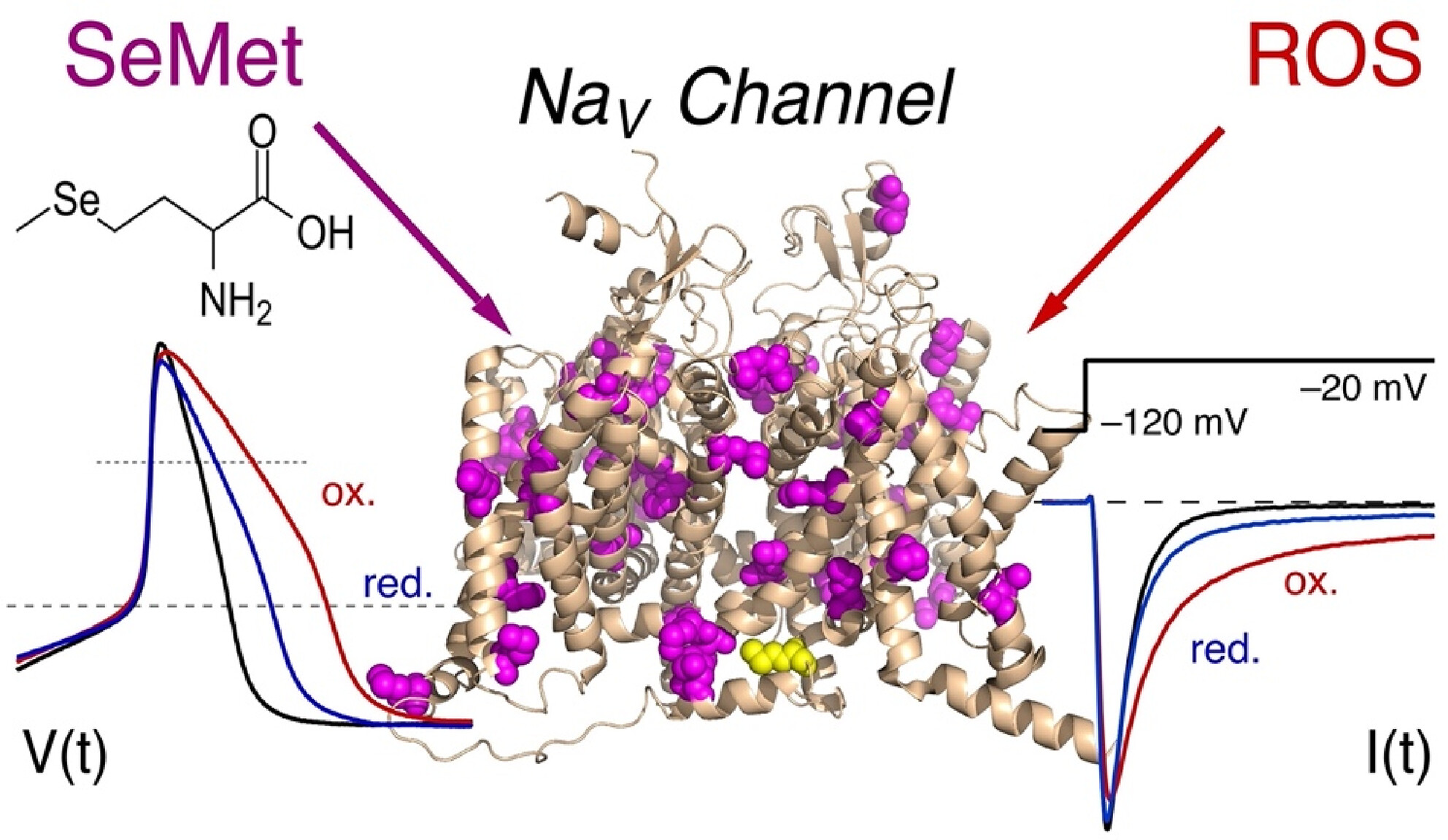
Selenomethionine (SeMet), which is used as food supplement for its antioxidative properties, readily replaces methionine in protein synthesis. Here, we found that SeMet incorporation in voltage-gated sodium (NaV) channels fully supports channel function. However, SeMet-containing channels are sensitized to reactive oxygen species (ROS) with loss of channel inactivation being the most prominent phenotype. This reversible gain of function is also observed in murine dorsal root ganglia neurons cultured in SeMet-containing medium. SeMet incorporation in NaV proteins coinciding with oxidative insults may therefore result in hyperexcitability pathologies, such as cardiac arrhythmias and neuropathies, like congenital NaV channel gain-of-function mutations.
Copper induces neuron-sparing, ferredoxin 1-independent astrocyte toxicity mediated by oxidative stress
- Pages: 277-295
- First Published: 13 September 2023
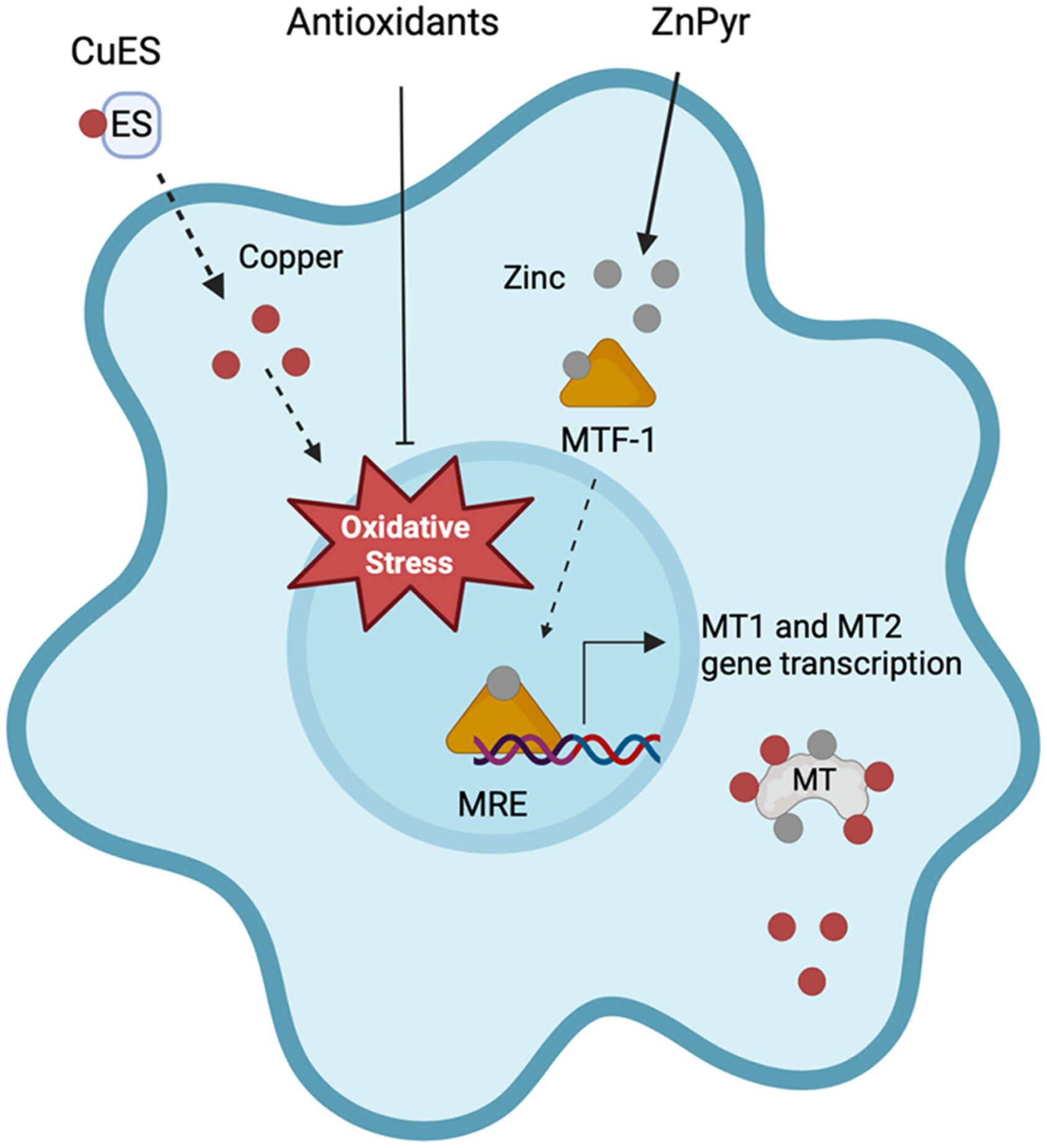
Copper is an essential enzyme cofactor. However, intracellular copper, when improperly buffered, can lead to cell death. Given growing interest in the use of copper in the presence of the ionophore elesclomol (CuES) for the treatment of gliomas, we investigated the effect of this compound on neurons and astrocytes in vitro. Here, we show that astrocytes were highly sensitive to CuES toxicity while neurons were surprisingly resistant. We found oxidative stress to be a key mediator of CuES toxicity. Indeed, anti-oxidant treatment mitigated CuES-induced cell death in astrocytes. We also found that induction of metallothioneins (MTs) with zinc pyrithione (ZnPyr) was protective against CuES toxicity. Created with BioRender.com.
Loss of the parkinsonism-associated protein FBXO7 in glutamatergic forebrain neurons in mice leads to abnormal motor behavior and synaptic defects
- Pages: 296-317
- First Published: 27 September 2023
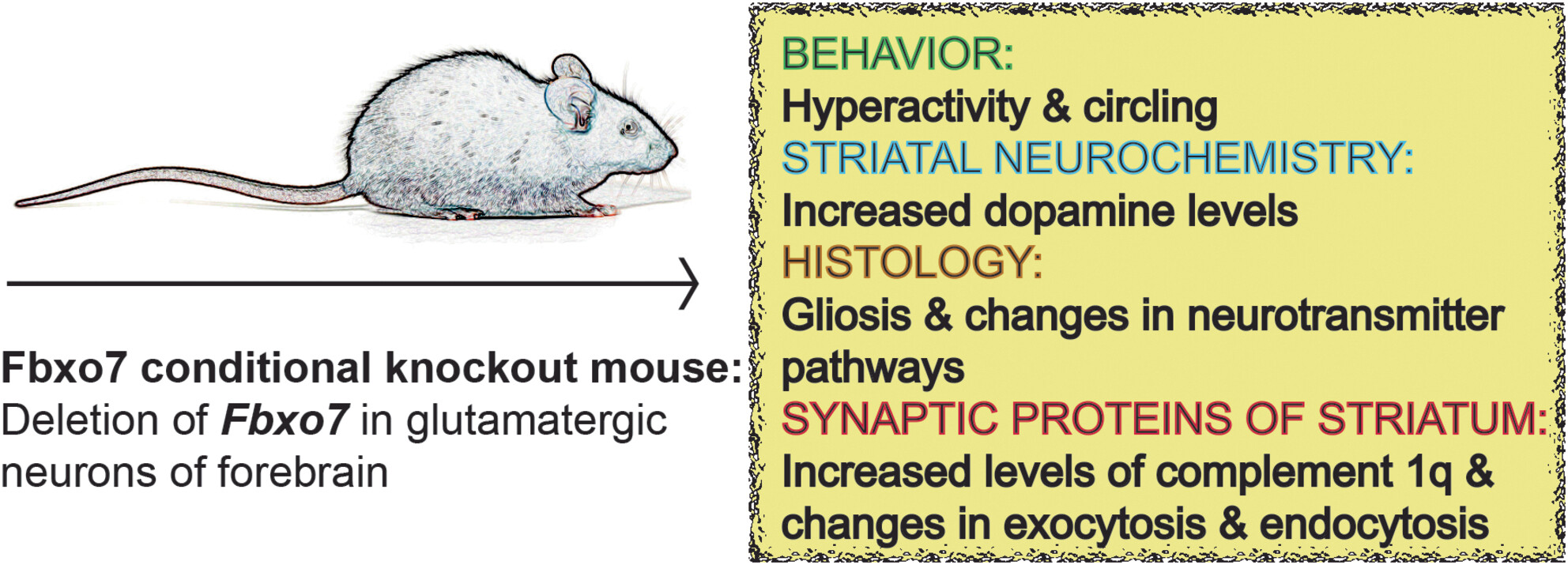
PARK15 syndrome is a complicated genetic variant of Parkinson disease (PD). While PD is a neurodegenerative disorder, mounting evidence underscores that PD can also be viewed as a synaptopathy. By deleting the PARK15-encoded F-box protein FBXO7 from glutamatergic neurons in the murine forebrain, we show that motor behavior and striatal dopamine levels are changed. We also demonstrate alterations in the dopaminergic, glutamatergic and GABAergic pathways. Most importantly, we find major changes in the synaptic pruning-associated protein C1q and in endocytosis and exocytosis in the striatum, suggesting a critical role for FBXO7 in the proper functioning of the striatal synapses.





